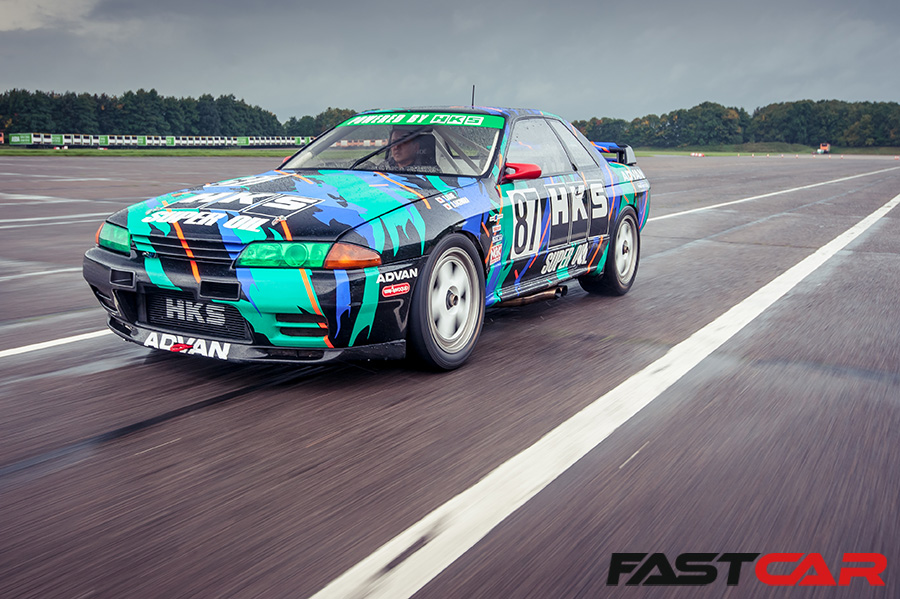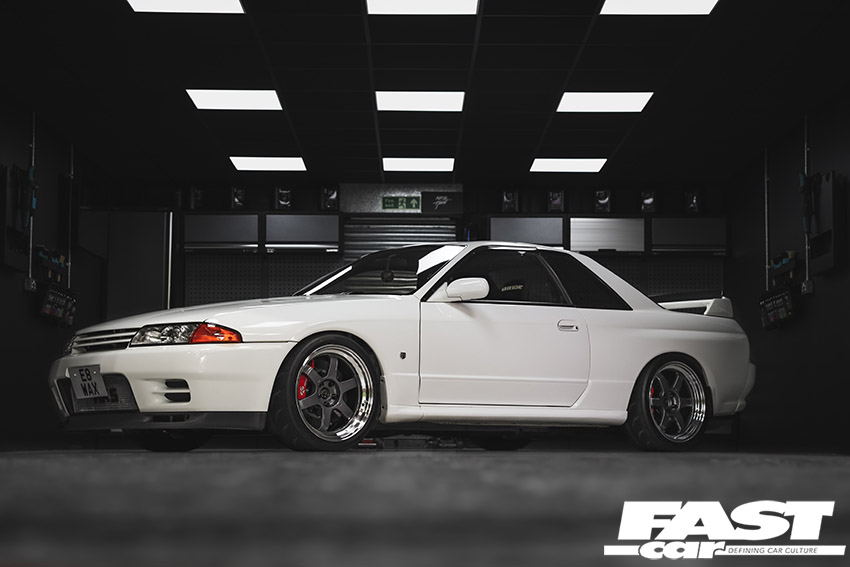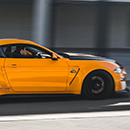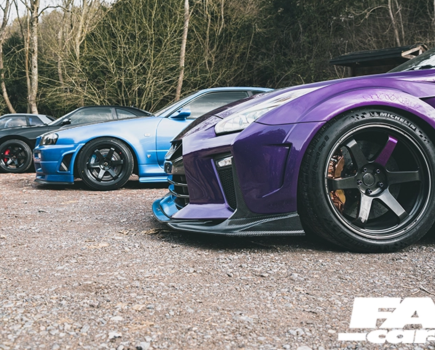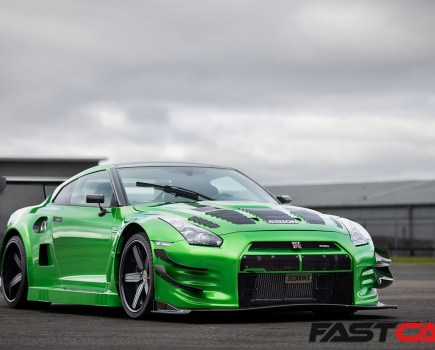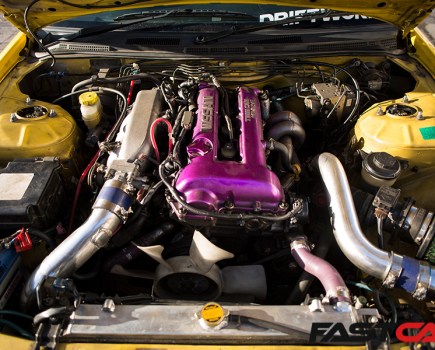A technological tour-de-force, the Nissan Skyline GT-R R32 lends itself to almost limitless tuning potential. Here’s how to modify and extract the best performance from this Japanese icon.
The Skyline name has been synonymous with racing success since the early ‘70s, where the original GT-R, known as the Hakosuka (which translates to Boxy Skyline), wiped the floor with its competitors securing 52 victories in a single year. But times were changing rapidly, and soon cars like the Skyline GT-R were shelved when stricter global emissions laws came into place. It would be nearly 20 years until the iconic GT-R badge would once again be seen emblazoned across the rump of a Nissan sports coupe, but boy was it worth the wait…
Nissan Skyline GT-R R32 Design
The R32 Skyline GT-R retained a straight six engine like its predecessors, but the all new RB26DETT boasted twin turbochargers. The 276bhp 2.6-litre unit gave the car a frantic and ferocious character well-suited to its monster nickname, the R32 rip-roaring from 0 to 60mph in 5.6 seconds and on to 156mph.
To rein in its barbarian pace, Nissan installed a four-wheel drive system featuring an electronically-controlled torque-split. Inspired by the futuristic AWD Porsche 959, the ATTESA E-TS (Advanced Total Traction Engineering System for All-terrain with Electronic Torque Split) system fed torque to the wheels that needed it most. Mated to HICAS four-wheel steering, which activated only when the car exceeded 50mph, HICAS steered the rear wheels in the same direction as the fronts to improve turn in. The R32 took its visual cues from the earlier KPGC10 and R31 Skyline, but borrowed its signature tail lamps from the KPGC110. Deep bumpers, a rear spoiler and 16in wheels kept things simple.
Nissan Skyline GT-R R32 Racing Success
On the track, the R32 was peerless, winning all 29 of the JTCC races in entered from 1990 to 1993, as well as twice taking the chequered flag at Bathurst in Australia in ’91 & ’92, and the 1991 24-hour race at Spa-Francorchamps in Europe.
This racing pedigree translated to a car well suited for copious amounts of tuning and over the years we’ve seen countless examples breach four figure power outputs with relative ease. Add in the relatively light chassis and advanced four wheel drive system, and you have an extremely capable machine indeed.
To help you choose the right way to modify your car and indulge in some Nissan Skyline GT-R tuning, we’ve broken the car into its component parts to give you specific advice on how to maximize each area.
We’ll show you which parts you’ll want to upgrade – as well as which ones work fine from the factory – to let you know the essential areas to spend your cash to make this monster of a motor even more ferocious.
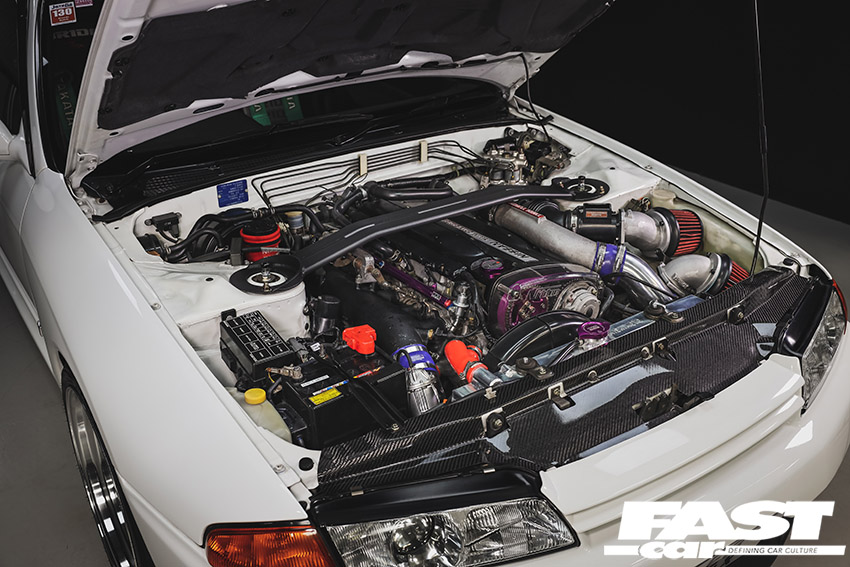
Nissan Skyline GT-R R32 Engine Tuning
The 2.6-litre, twin turbocharged, six-cylinder RB26 is right up there with the most iconic engines ever made. Producing a claimed 276bhp straight from the factory (although the actual figure is likely somewhat more), it is capable of making well into four-figures with the right supporting modifications.
Boost upgrades
Before you even consider tuning your R32’s engine, you should have the turbos checked, or even better still, replaced with items with steel internals. This is because the R32’s standard turbos come with ceramic turbine wheels, which can become brittle over time, and with the R32 now over 30 years old, have a high likelihood of shattering under high boost levels. This leads to the ceramic fragments being sucked into the engine causing catastrophic engine failure. Steel turbines don’t suffer this same fate, so are well worth the outlay in reliability terms alone, plus you can upgrade to slightly larger units such as a pair of Nismo N1s, HKS GTSs, or Garrett GTX2860R Gen 2s. All of these turbos will make around 500bhp with ease, which is where you hit the limit of the standard injectors, fuel pump, and air flow meters.
Supporting Mods & Bigger Turbos
At this level, injector sizing will need to increase to either 550cc, 750cc, or even 1000cc units, and an uprated 255lph in-tank fuel pump from the likes of Walbro. It might not be the most exciting set of upgrades, but the car will need both of these mods to handle the increased demand of super unleaded. In most cases you’ll also need to fit larger airflow meters, usually RB25 or Z32 items. However, you can avoid that job if you swap the standard ECU for an aftermarket standalone one. Link, Motec, and Haltech all produce items which don’t require air flow meters.
Much above this level and you might want to consider junking the twin turbo setup for a big twin-scroll single from the like of Garrett, Precision or Borg Warner, as this will offer the biggest increase in boost as well as offering even faster spool times and improved response. Of course, this will also require additional parts such as a new inlet, exhaust manifold and wastegates, but some tuners such as Garage Whifbitz offer a complete single turbo kit. The extra performance and insane noise will be well worth it.
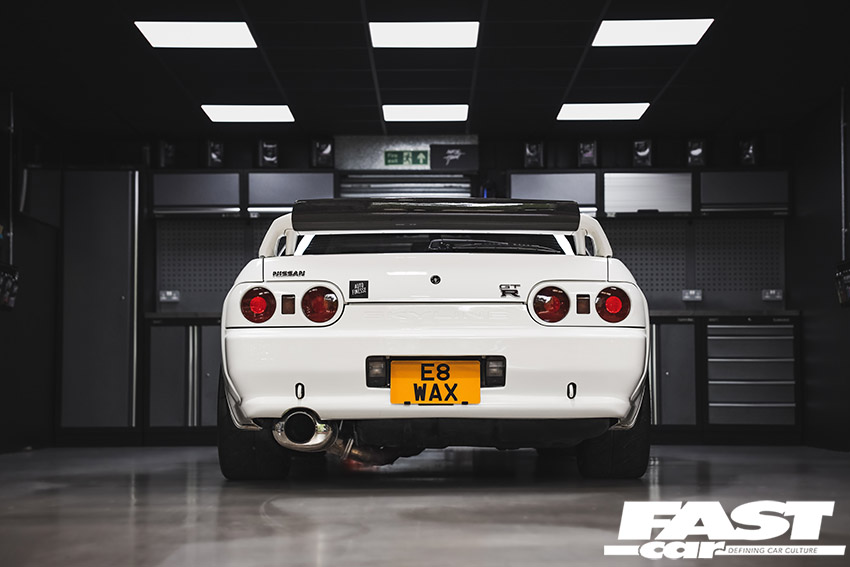
Nissan Skyline GT-R Exhaust Tuning
The R32 GT-R is heavily limited by the restrictive standard exhaust. A full 3in or larger system with a de-cat pipe (or a free-flowing sports cat) and new turbo downpipes will improve throttle response, allow the motor come on boost faster, and can increase power by around 25bhp. A full R32 GT-R performance exhaust system including the downpipes, de-cat, and cat-back system is not a cheap modification, with a Tomei Ti Racing titanium downpipe retailing around $1200/£1350, a Tomei Expreme Ti de-cat pipe around $300/£300 and a 3.75in HKS Silent Hi Power exhaust coming in at around $1000/£1100, depending on supplier.
Elsewhere on the exhaust side if you want the ultimate in exhaust gas flow, then for around $800/£900 you can get a pair of Tomei Expreme manifolds, which come with a 41.5mm diameter and offer significant gains over the stock Nissan N1 manifold and are suitable with both stock and aftermarket stock-fitment turbos.
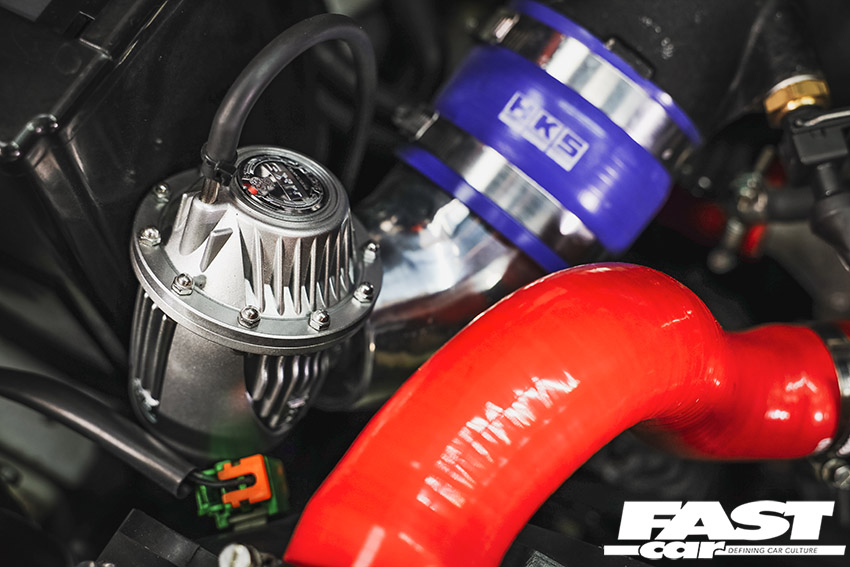
Nissan Skyline GT-R R32 Intake Tuning
Most R32s these days will have already done away with the stock airbox, however, if yours does still have it in place, an uprated panel filter element is still a great addition. This is a very simple and cheap upgrade, with most aftermarket panel filters generally costing less than $50/£50, and is perfectly capable at power levels up to about 500bhp.
Above this level, however, you will then be reaching the flow limit of the stock airbox and will need to ditch it in favor of a pair of aftermarket cone filters, one for each of the RB26’s twin turbochargers. An pair of HKS Super Power Flow Air Intakes costs around $400/£380 and these cool mushroom filters will give the iconic 90s tuner look to your engine bay.
Remapping
While the stock ECU can generally take care of things at the lower end of the tuning scale, there is no doubt that having a re-mapped ECU to suit the modifications perfectly will free up some extra power when you venture further down the line. The best option for optimal power increases is to swap the standard ECU to a full standalone unit from the likes of Link, Motec or Haltech. These allow you to control multiple aspects of the engine to ensure precise tuning and will be able to adapt to any future modification you might make.
Cooling upgrades
Although the stock intercooler is a pretty decent unit and has been proven at over 600bhp, an intercooler upgrade is still highly recommended if you are upping the boost considerably. If you’re on a budget, you can get away with one of the many low priced Chinese intercoolers available on eBay, but with a car that is rising in value like the R32, we’d opt for the $1300/£1250 HKS Type R intercooler which will not only be able to cool and flow enough air for just about any power you want, but it will also be around 25% lighter than the stock item too. While you’re at it, we’d recommend adding an oil cooler and uprated aluminum radiator to beef up the car’s cooling system too.
Camshafts
When it comes to camshafts you can go mild or wild, but beware that the more aggressive you go with the cams, the less drivability you’re likely to have as a result. For most people a set of mild cams, such as a set of $700/£650 ‘drop in’ Tomei 260 degree PonCams, is enough. Along with a suitably remapped ECU, these give impressive gains with little to no downsides. Bear in mind that more aggressive cams will also require more extensive head work with uprated valve springs and retainers needed too.
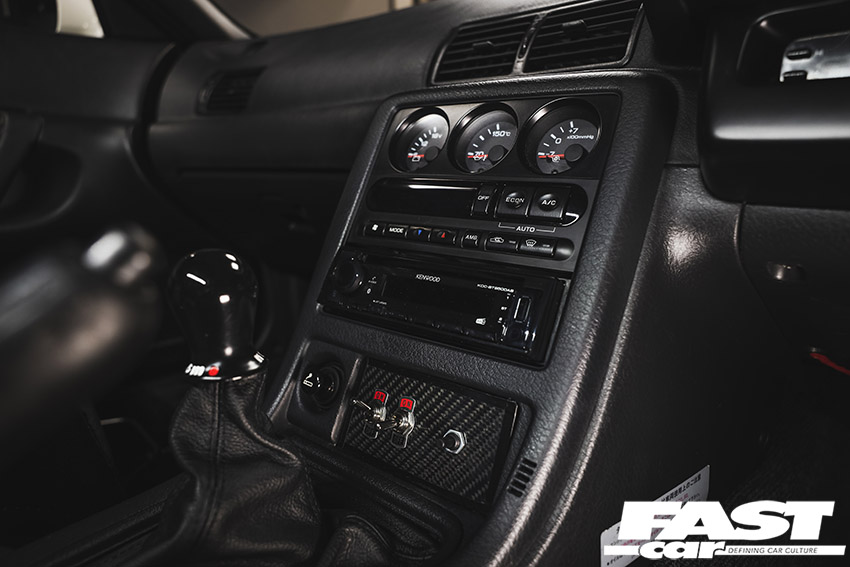
Nissan Skyline GT-R R32 Transmission Tuning
Clutch
If it hasn’t given up already, the original OEM clutch will likely be on borrowed time even without additional modifications, so it is wise to budget for an uprated item if you plan on upping the GT-R’s performance. At $800/£700 a Competition Clutch stage three clutch with lightweight flywheel is a worthwhile investment and should suffice until approximately 600bhp, with almost standard levels of drivability too. For higher levels of tune, we’d recommend going to either a twin or triple plate item such as Exedy’s $1700/£1680 Hyper Multi Twin or Triple kits. These come with lightweight flywheels and can handle extreme levels of torque while retaining comfortable driving.
Gearbox
The R32’s five-speed gearbox is capable for most power levels, however, it does have a weakness in its fourth and fifth synchro which can mean crunchy changes if you try to shift too quickly. The best solution is to drive a little more sympathetically when gear-changing. Keep ramming that gear home and you’ll chew up the baulk ring double quick. But if you really can’t drive at less than ten tenths, then uprated gearsets are available from the likes of OS Giken and Quaife. These are not only stronger, but often use closer ratios to improve acceleration and straight cut gears with dog engagement to allow extremely fast and reliable shifts with minimum transmission losses. They can be noisy and are certainly not cheap, with the Quaife six-speed set offered by Tuning Developments starting at £6250.
Differentials
The R32 uses Nissan’s clever ATTESA PRO four-wheel drive system, with front and rear limited slip differentials and a trick torque-splitting centre differential that can send torque to whichever wheels need it the most. But even with such an advanced system, you can always make improvements and OS Giken offer uprated Superlock LSDs for both front and rear axles. Designed for combined street and circuit use, with more predictable traction and cornering performance, these $1600/£1400 (each) units can handle the highest levels of horsepower and improve high speed stability compared to standard all the while giving increased levels of durability.
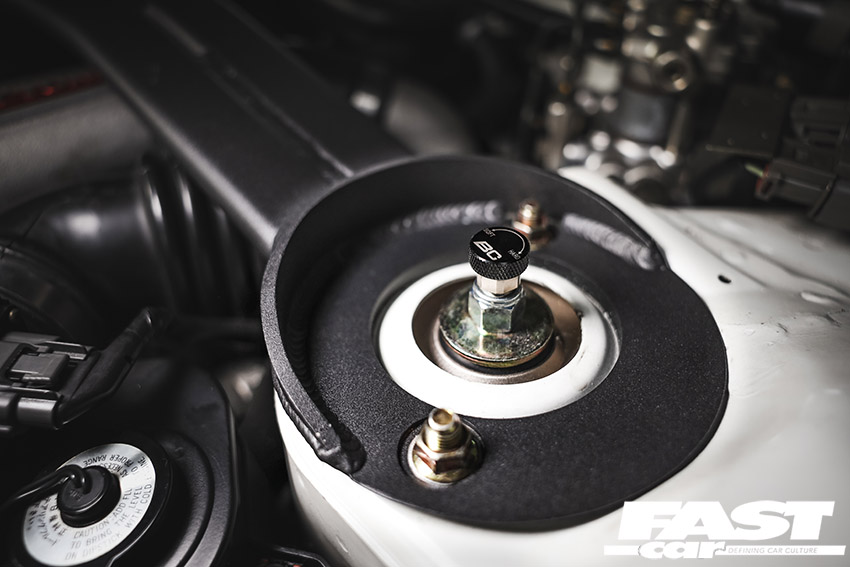
Nissan Skyline GT-R R32 Suspension Tuning
Springs and dampers
The Skyline’s suspension is decent out of the box, but can feel a bit soft, especially if the ageing dampers are past their best.
V-Spec cars have suspension that works well on track, but even a non V-Spec car can be slightly lowered and stiffened up with a set of replacement springs and some Nissan V-Spec dampers, although these are getting more expensive and harder to find these days.
Of course there is the option of a huge range of coilovers with all the options they give for not just height, but also damping adjustment, plus the in-car gadgetry some now offer.
A set of Ohlins Road & Track units would be an excellent choice for street and circuit and retail for around $2500/£2350, or a more wallet friendly option would be a Meister R kit for $1000/£900.
Hicas lock out
As well as an advanced four-wheel drive system, the R33 GT-R also features four-wheel steering via the rear Hicas system. Unfortunately, especially on older models, the Hicas system can often fail, leading to unpredictable and sloppy handling. Fortunately, companies such as Driftworks offer the £230 HICAS Eliminator kit, which removes every part of the flawed Nissan rear steer system, replacing it with fully adjustable, heavy duty rod ends toe control arms giving precise adjustment and confidence inspiring handling. Alternatively, simply disconnecting the Hicas pump and installing some washers into the Hicas rack will also stop it moving for less cash.
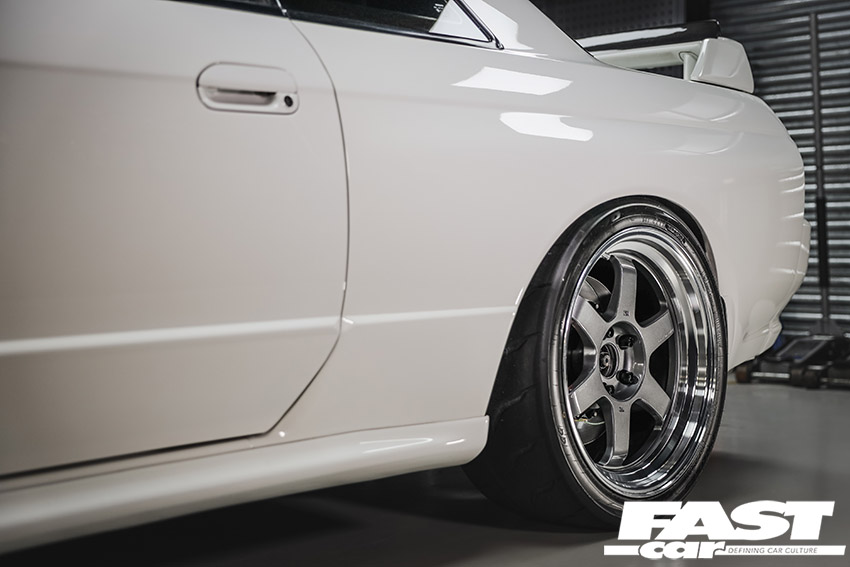
Bushes
Most OEM cars are fitted with rubber bushes from the factory, these are cheap and replaceable, meaning many will be worn out by now, so replacing them with a firmer polyurethane upgrade makes a lot of sense; not only do you get a genuine performance benefit of the stiffer bush and less unwanted flex in the suspension system, but they’ll never need replacing again in the future. The R32 is over 30 years old now, so the OEM suspension bushes are very likely well past their best, so replacing them will be a priority, especially if you are planning any other suspension upgrades.
A full bush kit from the likes of SuperPro will cost around $600/£580, but individual areas can be upgraded at a time to ease the financial burden.
Anti-roll bars and braces
Anti-roll bars do exactly what they say on the tin – resist your car’s propensity to body roll. By fitting stiffer items you can increase their effect. For the R33, we’d suggest replacing the stock items with thicker and stiffer items from Aussie chassis tuning experts Whiteline. An adjustable 22mm rear ARB is around $230/£210 while a 24mm item is $250/£220. Keeping things Japanese you could also chose a Cusco front ARB for around £255.
Geometry
Any performance car will benefit from a proper alignment of its suspension geometry and the R32 GT-R is no different. But don’t just add it on at your local tire fitters when you have your new tires fitted, as their equipment is not really set up to get the best out of your modified ride. Your best bet is to go to an expert who has the specialist equipment and knowledge to dial in custom camber, toe and caster settings to give you the handling you want from your car. If you want the ultimate setup, get them to corner weight the car with you sat in the driver’s seat too and upgrade to some adjustable suspension arms from the likes of Hardrace, which let you dial in more aggressive angles that you would otherwise be able to with the stock setup.
Check out our guide to the best suspension available for the Nissan Skyline GT-R R32.
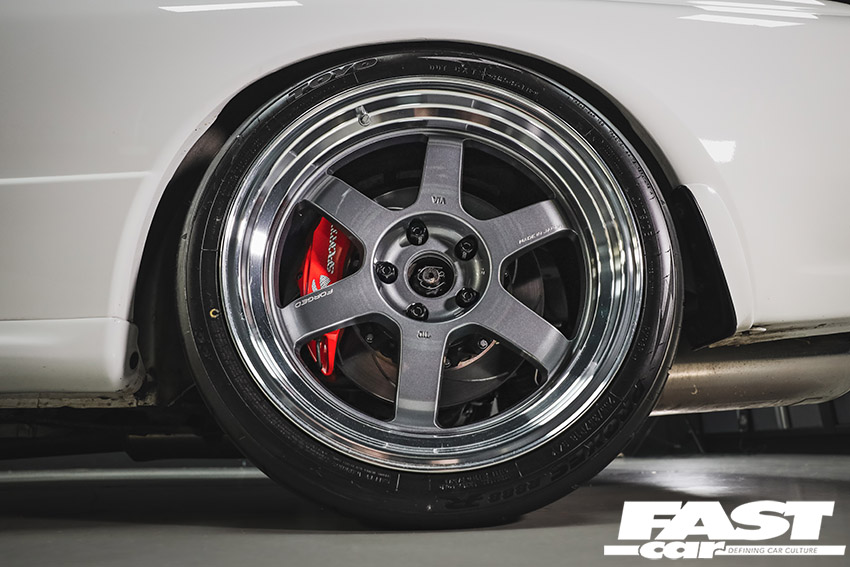
Nissan Skyline GT-R R32 Brake Tuning
The R32 has decent brakes as standard but a swap to the factory fit Brembos of the R33 or R34, will make a noticeable improvement.
Beyond this, some performance brake pads such as the excellent EBC Yellow Stuff pads can bite well and haul the big Nissan to a stop pretty sharply. Next up would be a swap for a set of aftermarket front rotors such as those from Dixcel. But before you do this decide if you want to go for bigger rims, because this can open up all sorts of options for big brake kits from the likes of AP Racing, Alcon and TarOx, whose 350mm rotors and 8-pot calipers come in at around $2800/£2500 with pads and braided hoses included.
Nissan Skyline GT-R R32 Tuning: Performance Wheels & Tires
With 7x16in rims as standard, the R32 is ripe for some extra rubber. This can be either with some wider tires to increase the car’s footprint, or a swap to some larger 17in or 18in wheels. Either way, you should ensure the wheel and tire sizes are the same all round or you will encounter problems with the four wheel drive system. A 9.5 x 18in wheel with a 265-section tire is the recommended sweet spot, as not only does it fill the arches nicely, but opens up a wide range of both wheel and tire options at various price points.
Of course, being such a high performance machine, and especially when tuned, it’s well worth fitting some high performance tires such as Michelin Pilot Sport 4s or a dedicated track tire such as a Toyo R888Rs if you plan on using your Skyline predominately on track.
Be sure to check out our guide to the best wheels for the Nissan Skyline GT-R R32.
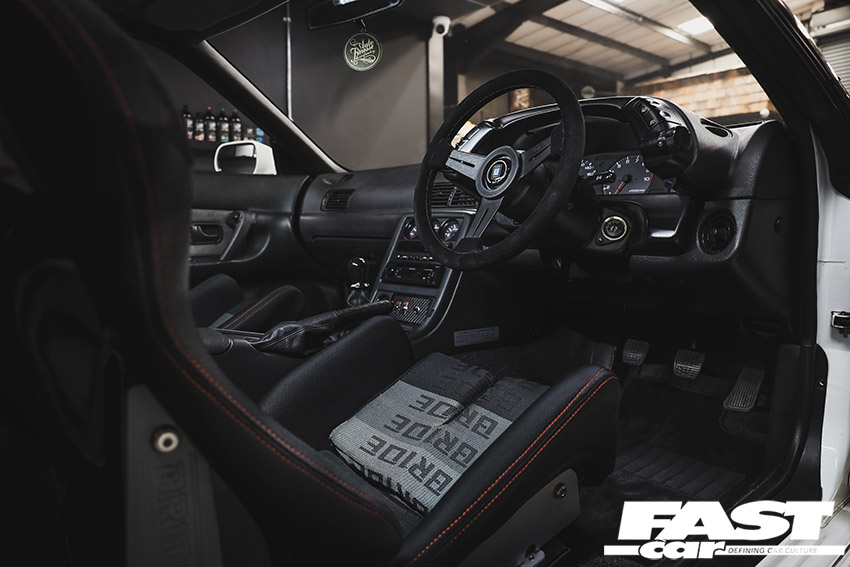
Interior Upgrades
At over 30 years old, even cherished examples of Nissan’s R32 GT-R are likely to be looking a bit tatty on the interior side of things. Touchpoints such as steering wheels, gearknobs, handbrakes and pedals will likely feature the worst of it, as will seat bolsters and mats. Luckily there are a host of upgrade parts available, from Nardi race steering wheels to Nismo gearknobs and mats that will freshen things up a treat and add some race car chic.
Bucket seats with some iconic green Takata harnesses will add even more track style and scream ‘90s Japanese tuner like little else.
Looking for a new head unit? Check out our guide to the best car stereo and head unit in 2023.
Styling Upgrades for the Nissan Skyline GT-R R32
There were nearly twice the amount of R32 Skyline GT-Rs made than both of the next two generations put together, so it’s no surprise that the R32 has a whole host of styling upgrades. All the top Japanese tuners had their own aero kits to choose from, with the likes of Top Secret, Veilside, Nismo and BN Sports all offering up their wares for the 32. If money were no object, we’d look to Garage Active Japan, who offer lightweight dry carbon fibre replacement parts to pretty much clothe your entire R32 in the gorgeous black weave.
Alternatively, you can pump up your R32 with a steroidal wide arch kit from Veilside. If you prefer a subtler approach however, there are still a huge array of splitters, spoilers and side skirts to choose from to make your 32 stand out from the pack.
Words: Dan Sherwood

